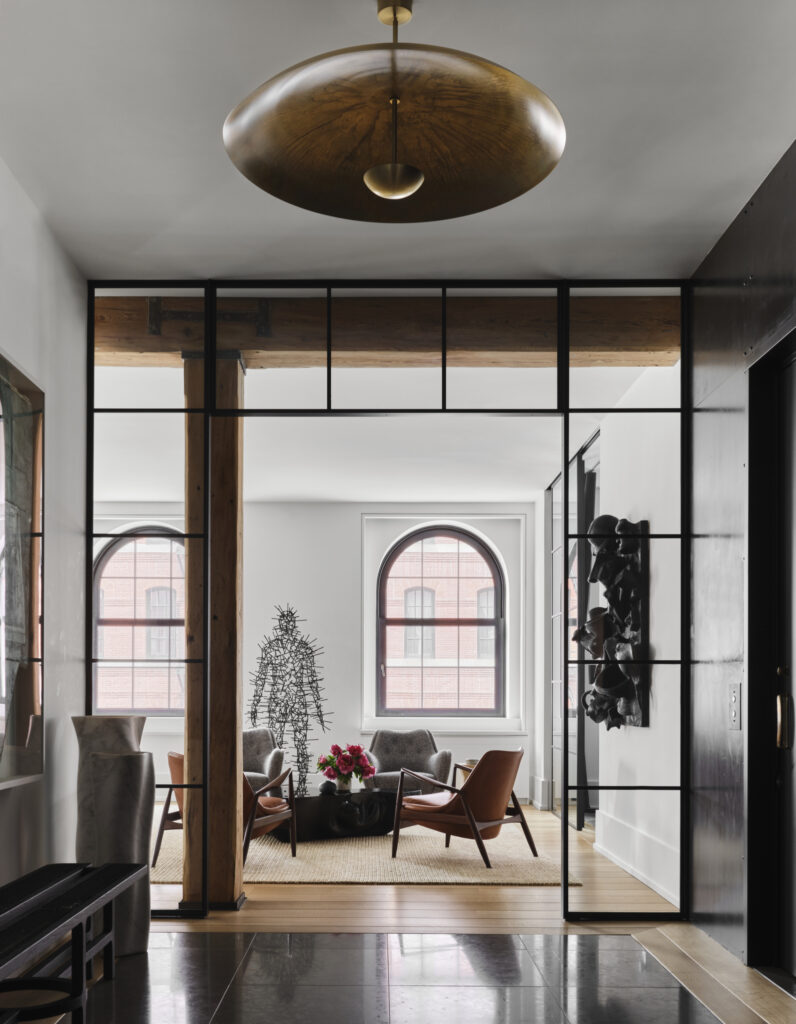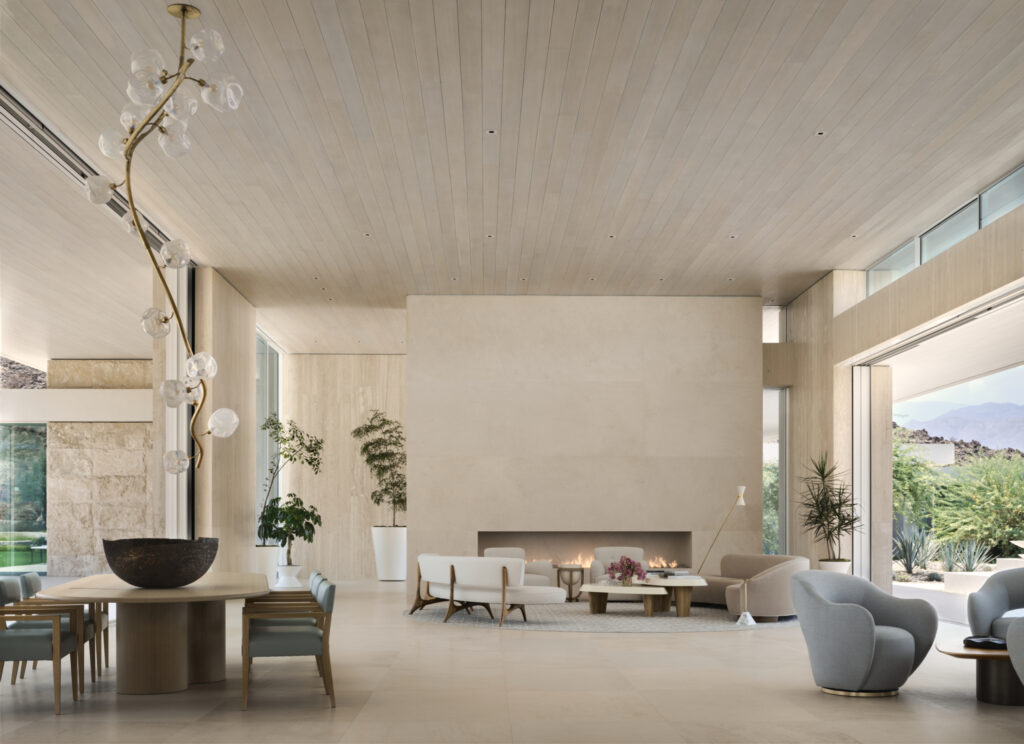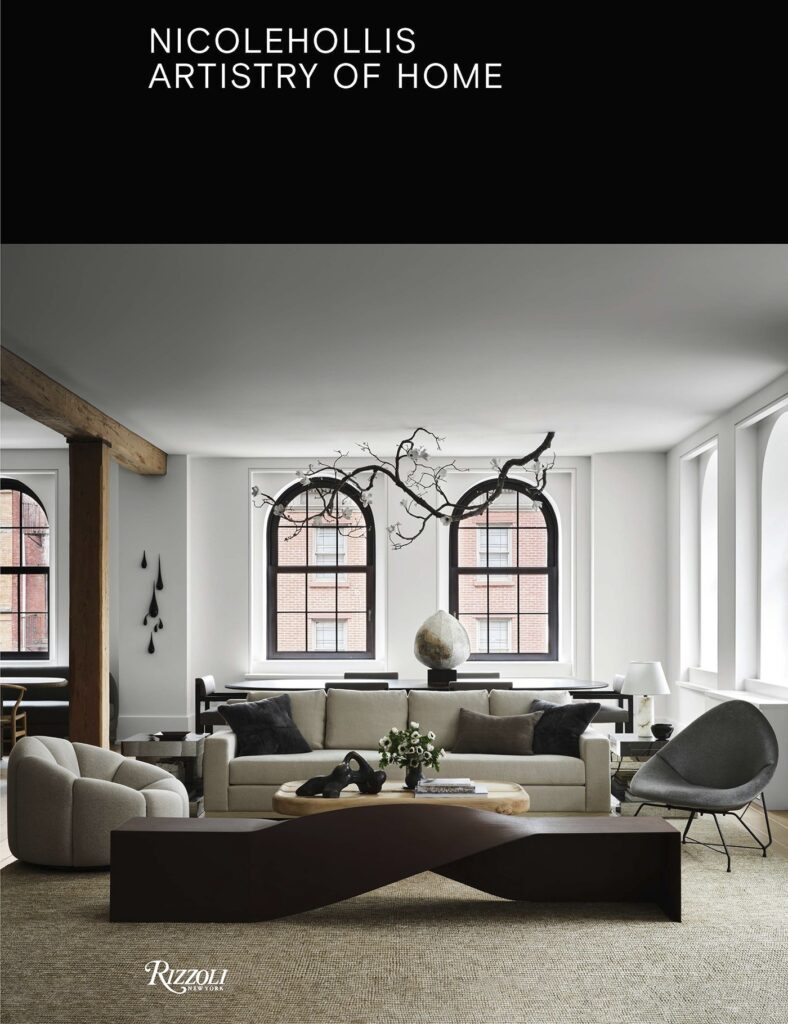
In design and architecture, there must always be a pioneer that shakes conventions, brings daring approaches and fresh transformations, and comes to shape places in new, innovative ways. In Northern California that pioneer is San Francisco-based interior designer Nicole Hollis, who has certainly forged a distinctive narrative within the world of contemporary interior design and is leaving an incredible mark on the interior landscape of the region of global tech companies and startups. Her spaces are sophisticated and refined, filled with magical objects and brilliantly synthesized. Hollis’ residential projects are largely defined by craftsmanship and detail, which reflect her passion for the crafts and her uncompromising quest for perfection. She chose the title Artistry of Home for her newly published monograph for that particular identity of her interiors. I met her in Manhattan to speak about her work and journey, about the pinnacle of the world of interior, and about the behind-the-scenes stories.
Hollis is a contemporary interior designer whose social media plays a crucial role in constructing her image and her influence. She creates contemporary interiors filled with unexpected ideas, demonstrating a strong desire to participate in the zeitgeist. She built her taste by visiting the UK’s state homes, the architecture masterpieces of California by some of her favorite architects (Rudolph Schindler, JB Blunk, Frank Loyd Wright), and endless design and architecture expeditions. Hers is a type of interior in which objects play the central role. It is the typoe which has emerged as the most substantial contribution to the world of the interior of today. Her spaces propose a way of life, leading her clients to live with refinement and quality as well as to respect and appreciate not just the essence of design and architecture as transformative experiences, but also to recognize the privilege and value of living with the best objects of the day.
Attended FIT, Hollis began her career in retail and switched to residential when she moved to the West Coast. From the time she founded her firm in 2002, she began a long and ambitious journey into crafting total environments in her own voice. Today, she employs nearly a hundred people and has shown herself to be one of the most serious buyers at design galleries, regularly making acquisitions at Carpenters Workshop Gallery, Maison Gerard, Friedman Benda, and other major players in the market. Her collaborations on bespoke pieces and installations with furniture designers (Ingrid Donat, David Weisman, Johanna Grawunder) bring a unique and personal touch to her spaces. While Hollis creates universal interiors using pieces created across the globe, her spaces still carry a strong American West Coast flavor—perhaps because of the landscapes seen from the windows of the homes that she creates, or perhaps because much of the interior fittings are fabricated here. The company is operated under six departments, the Interior Architecture Studio, Residential Design Studio, Custom Furniture Studio, Graphics Design Studio, Visualization Studio, Purchasing, and Operations, all headed by Hollis’ husband, who has been the CEO since 2014.
Her clients know that with Hollis, the budgets are as refined as the interiors themselves. Not once has a client been scared away from the proposed budget, and if they searched elsewhere, they tend to came back. Because once you get the taste of this type of dream homes, you cannot go back. You will not find mass-produced furnishings or objects, no ordinary pieces, no mediocre materials, and no sloppy finishes, nor the duplicate of interiors you have seen elsewhere. It is pure, unique, personal, and bespoke. Her interiors are characterized by architectural sensibility and a sense of minimalism. They are as couture as a dress from Dior Haute Couture fashion house and as refined as a piece of jewelry.
“How do you lead your clients to agree to invest in objects?” I asked. She told me that it is a long process of educating, and she acknowledged the role of the interior designer today as an educator. It is the role of the interior designer to push boundaries and to lead the client into developing taste that captures their own personality. She explained how bringing a client to the studios of artists such as David Weisman or Ingrid Donat is when they start understanding the labor-intensive processes and the work invested in those pieces or installation. It is only then that they can be converted. These studio visits are game changers and a big step into shaping refined taste.
The new monograph describes a variety of typical situations that every interior designer encounters, such as full renovations versus partitions, new constructions versus working on historic homes, clients who are interested in being led and those who have clear ideas on what they want, as well as collaborating with architects and artists. Hollis describes the challenges and joys that each one of those situations brings with it, the inspiration and process of thoughts. Each project is a result of a relationship, a demonstration of that special chemistry between the interior designer and the client. One of the best assets of this publication is Hollis’ personal and authentic voice, which is present throughout the book. “Dining rooms,” she says, “are my favorite for being among the last human rituals we have carried on since tribal times.”







